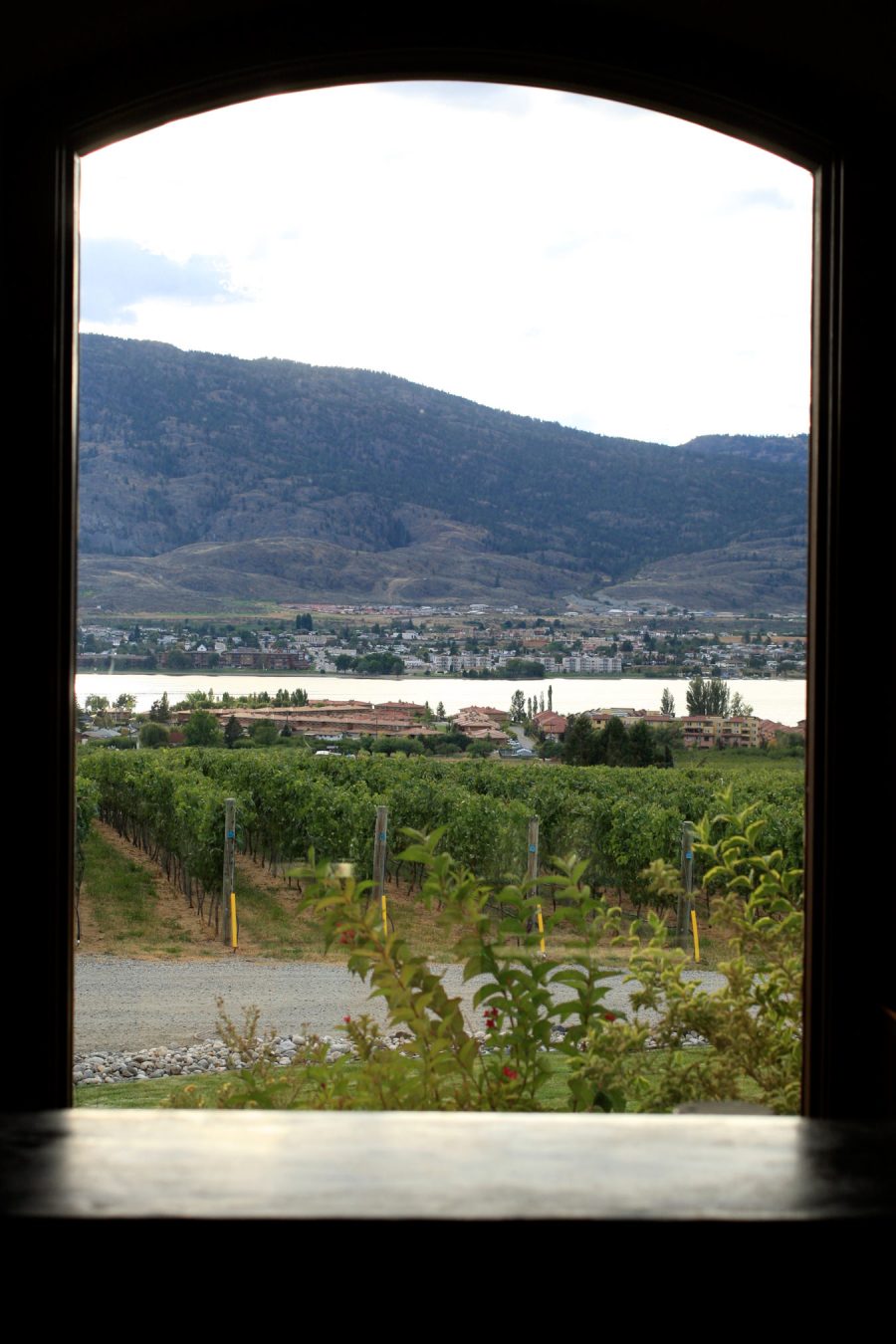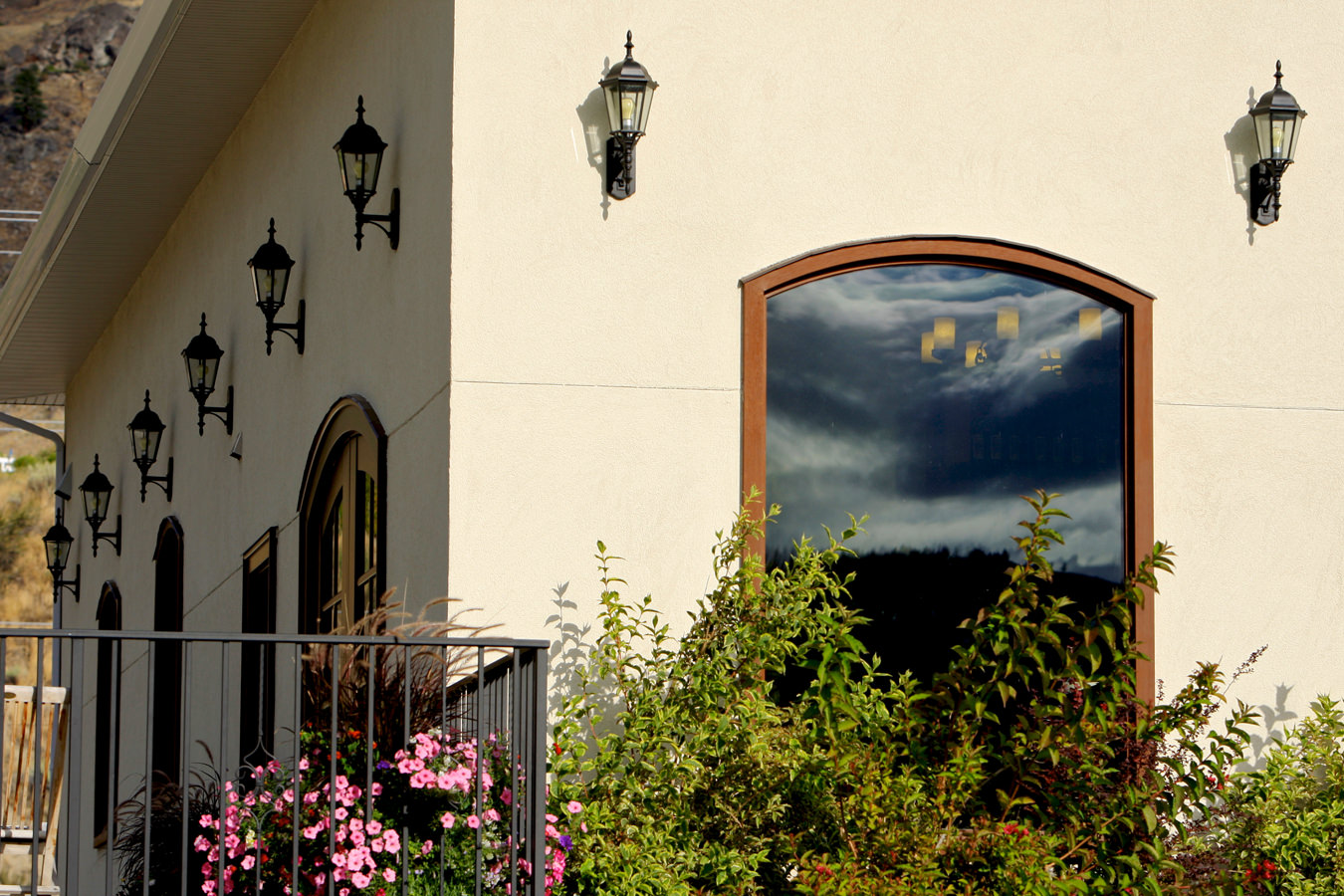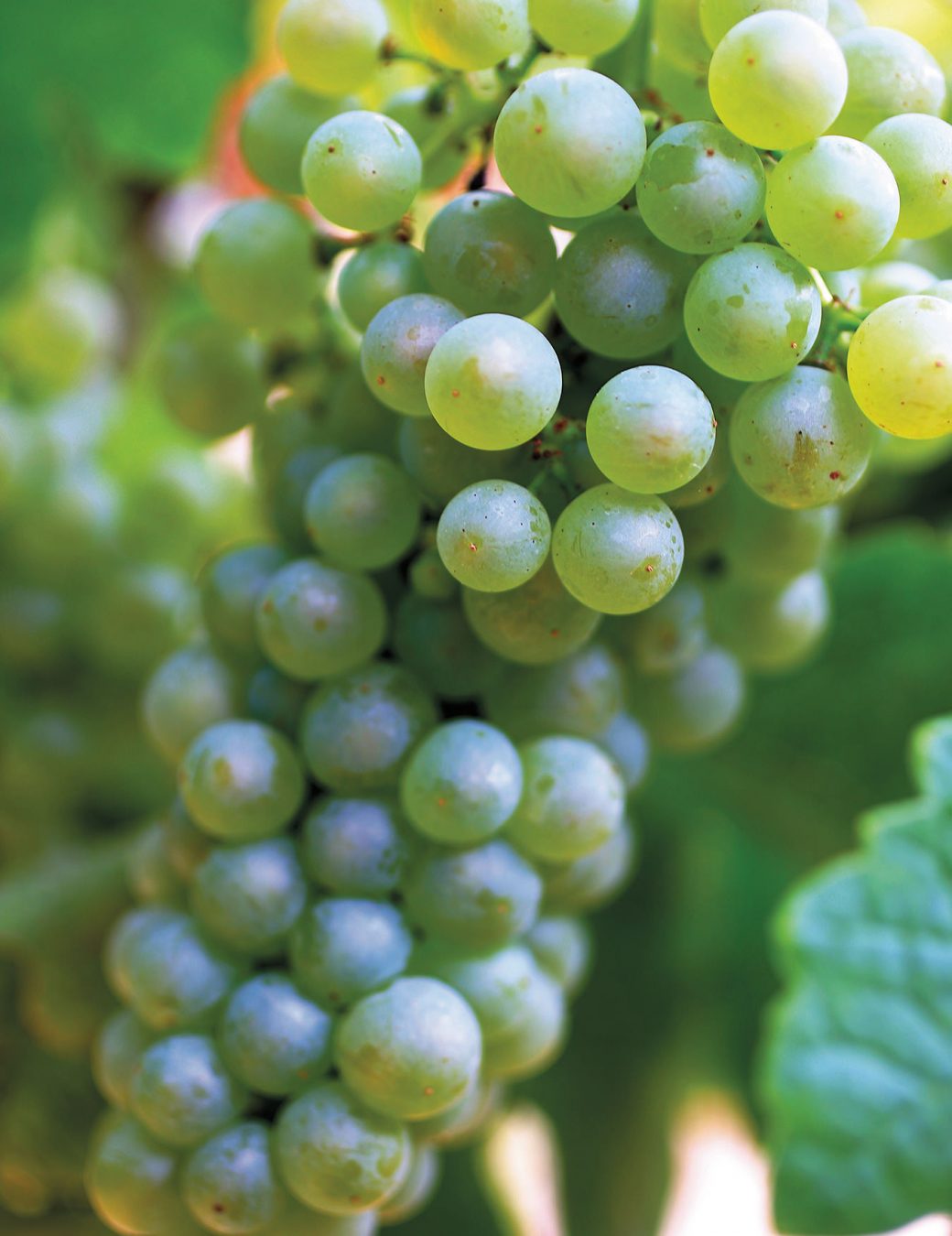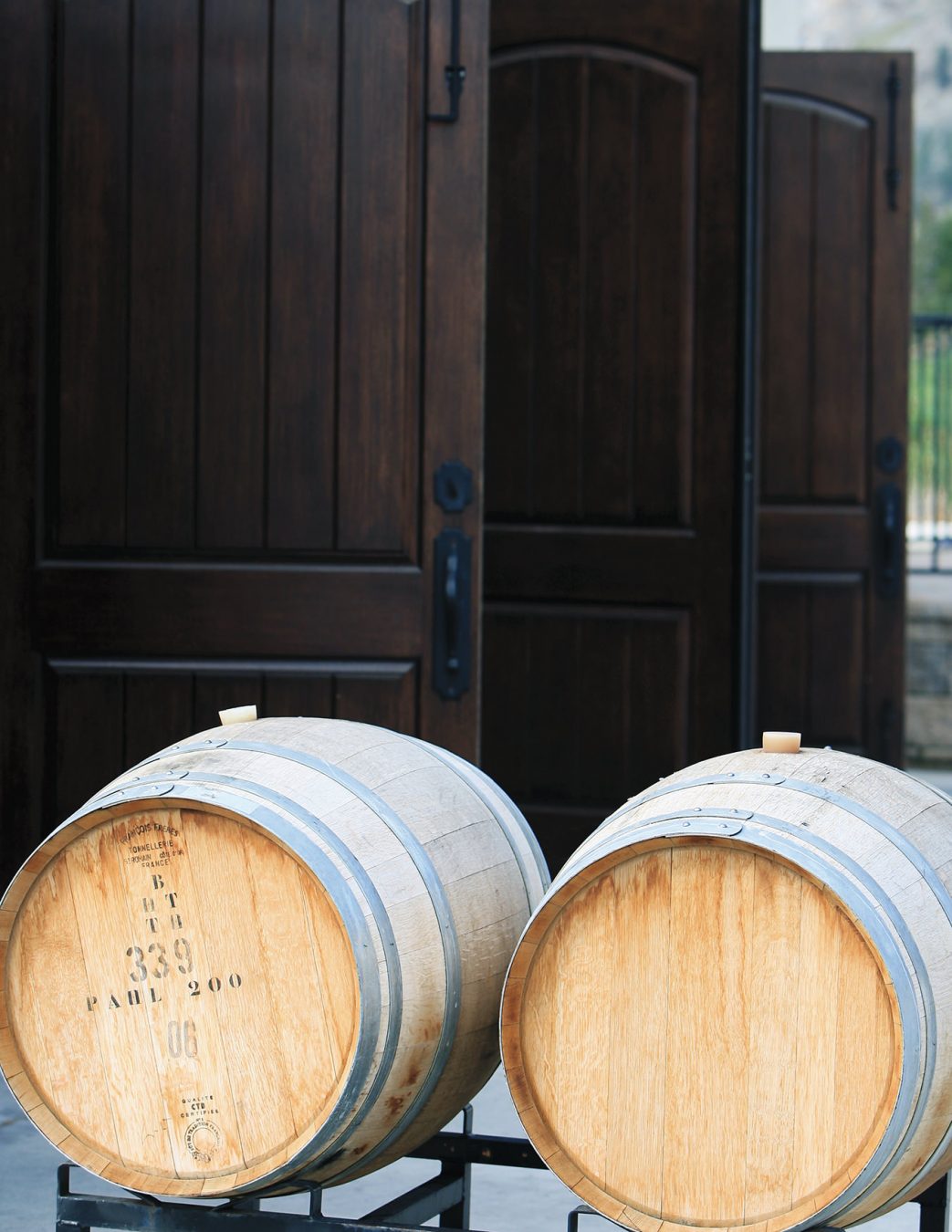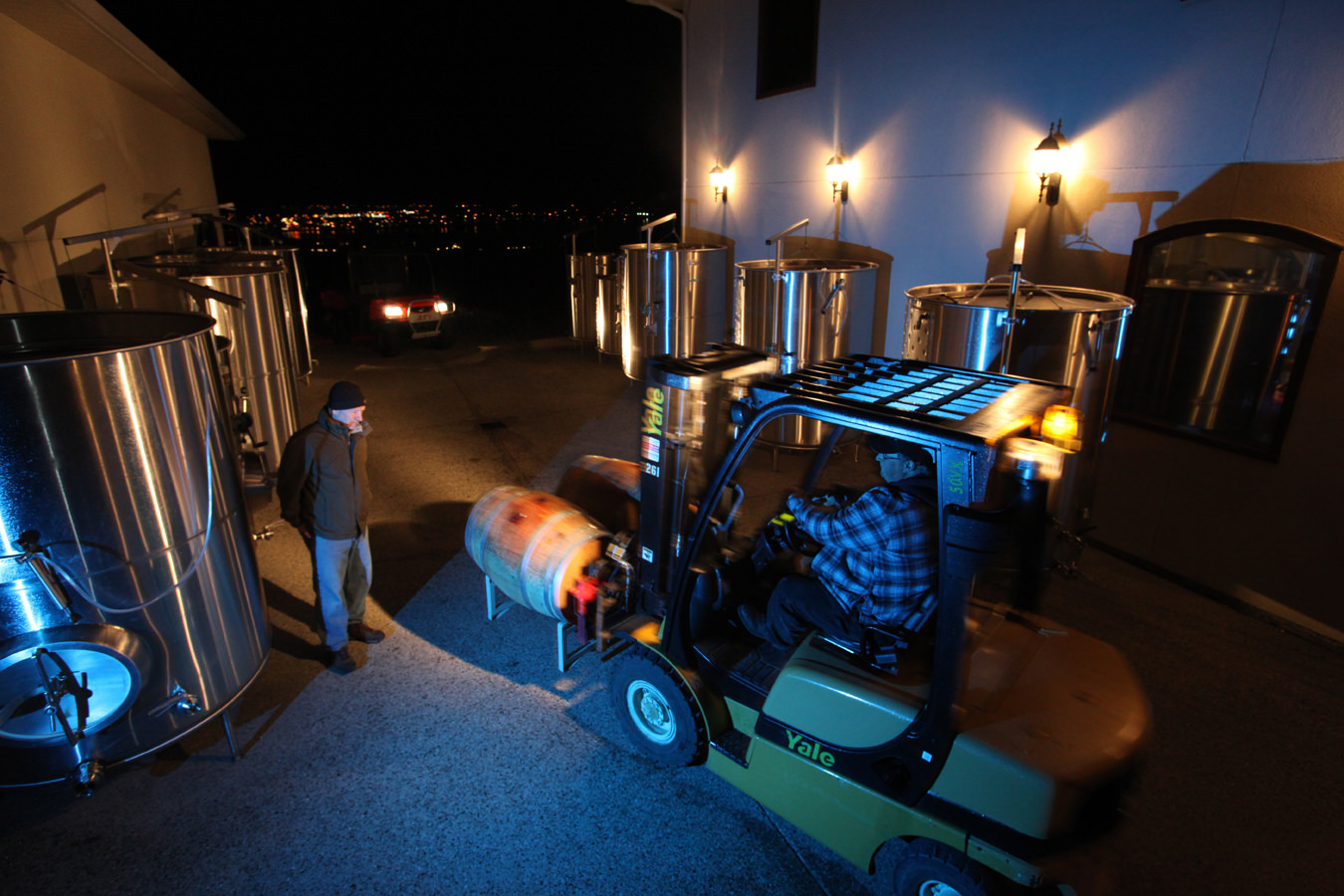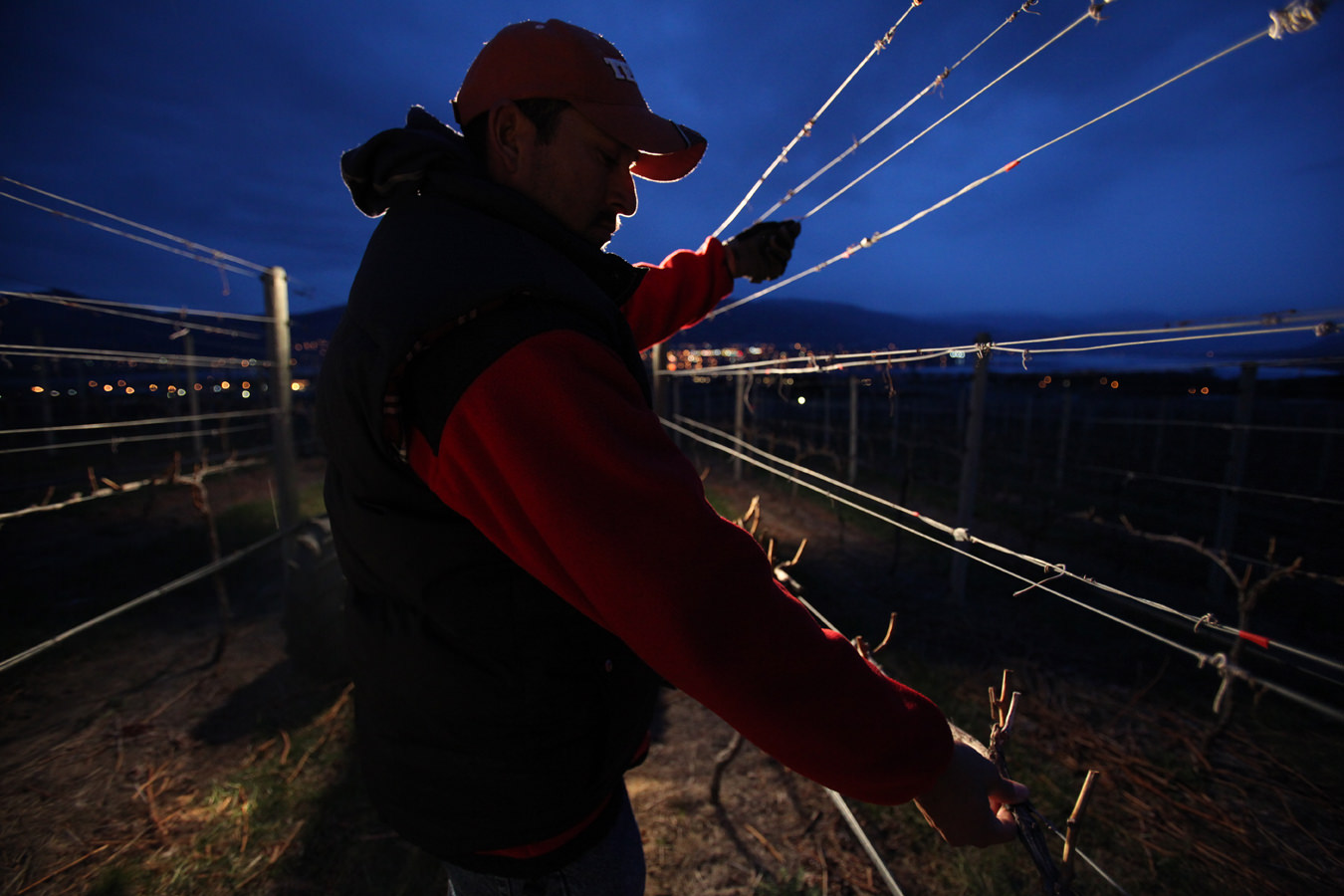You don’t forget a Moon Curser bottle when you see one. The labels may be whimsical, but inside are some serious and inventive wines. The winery first opened in 2004 as Twisted Tree, but Chris and Beata Tolley found that even their good friends would confuse the moniker with some of the other “twisted”- and “tree”-named wineries in the Okanagan. They wanted to refresh the label and make something memorable—something that would fit with their enthusiasm for alternative varieties and staying off the beaten track.
So they went for the big guns and had a complete brand makeover with the help of Bernie Hadley-Beauregard of Brandever, who is responsible for some of the most out-there winery branding. The Moon Curser label touches on the gold mining history of the region (the winery is located on the East bench of Osoyoos, which sits on the American border), with the term coming from the miners who tried to smuggle their gold into the United States to avoid paying Canadian duties. The smugglers would curse the bright moon that highlighted their illicit passage south and made it difficult to evade border agents.
While the name and packaging are memorable, the wine inside the bottle is what is most important. Chris and Beata have a penchant for avoiding what everyone else is doing, and instead paving their own way forward. While completing winemaking training in New Zealand and then through travels to Australia, they felt like everyone, everywhere was making wine from the same few varieties. When they started their own winery (a second profession for both of them, and thus a labour of love), they didn’t want to try to compete with a sea of merlot and pinot gris—and as self-professed wine geeks, were curious about different varieties—so they decided to get creative. Petit verdot, malbec, roussanne, marsanne, tannat, carménère, tempranillo, and even touriga nacional are included in their portfolio. There is an Italian influence, too, with dolcetto and arneis in the mix thanks to Chris’s family background in Northern Italy. The approximate 5,000-case production includes 13 different wines. When asked if they are looking to experiment further, Chris says: “Beata is already telling me we have too many products, so there is nothing new on the horizon.” Although, he then admits he planted an experimental half row of nebbiolo.
This curiosity for trying the new and unknown does not mean everything will be a success, though. “We had to learn a lot about carménère before we got it right, and we did have to pull out some corvina that just didn’t work,” says Chris. But that is part of being a pioneer: you get to experience the good and the bad. Some of the varieties Chris and Beata planted early on are now becoming more widespread in British Columbia—an indication they must be on the right track.
The style of wine has evolved, as the grapes and place have dictated. “You can’t expect grapes to taste like they do in other areas,” says Chris. “You can’t make a Barossa-style shiraz with syrah in the Okanagan, for example. You have to let what happens happen.” Many of the wines have formed their own style based purely on what the vineyard offers, and rightly so, as who could tell you what an Okanagan arneis or tannat should taste like, anyway? The Tolleys didn’t want to intervene with too much manipulative winemaking—something they felt would have the effect of hiding the sense of place and characteristics of the grape.
Alternative varieties are becoming a trend all over the world. Luckily for Chris and Beata, they are a few steps ahead of everyone else, fittingly, just as the moon cursers on their labels try to keep one step ahead of the law.
Stay current with more wine stories.


